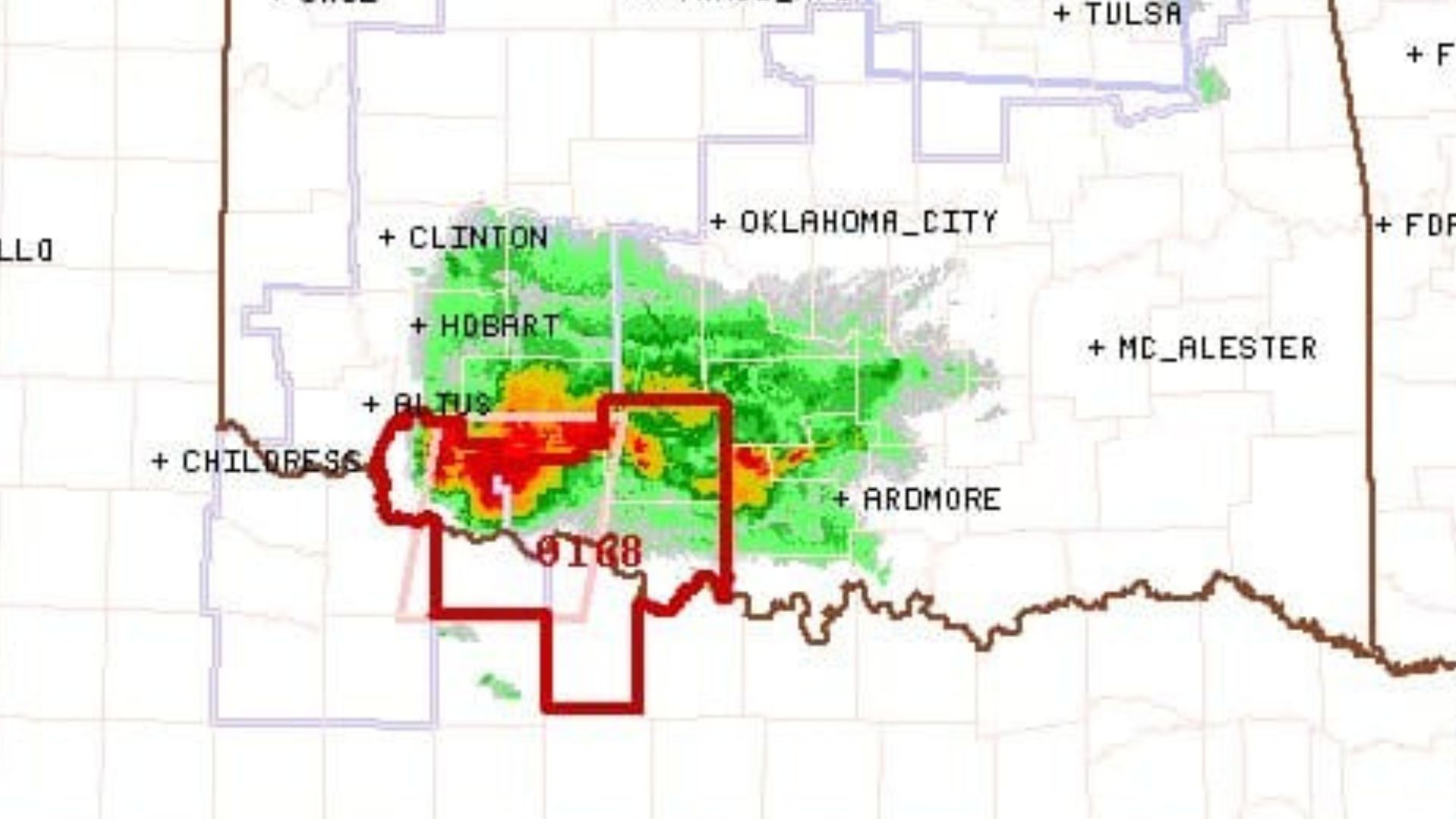
An ultra-rare backward-spinning tornado was spawned Tuesday (April 30) from a powerful supercell thunderstorm that formed over the Oklahoma-Texas border.
This backward tornado burst to life in the wake of another odd twister, which was unusual in that it looped back over its own path, CNN reported. Tornadoes tend to travel from west to east, because the prevailing winds in the U.S. travel in that direction and thus push storm systems that way. However, tornadoes can sometimes turn back on themselves as they lose strength; in this case, the tornado completed a full loop over its original path before dying out.
This looping tornado had formed north of Loveland, Oklahoma, around 10 p.m. local time. It traveled east before heading north, west and then east again, over the same area it had already hit.
To be clear, in this loop we have a westward moving, dissipating cyclonic tornado AND and newly developed anticyclonic tornado also moving west-southwest with a debris signature. This is so incredibly rare it’s hard to describe. pic.twitter.com/SCpnyWXOgAMay 1, 2024
"You certainly don't see this every day," Rick Smith, a meteorologist with the National Weather Service (NWS) in Norman, Oklahoma, told CNN.
Related: 'Wedge tornado' in Mississippi is the deadliest in more than 50 years
As the looping tornado died down, the backward-spinning twister appeared a few miles southeast of Loveland, just before 10:30 p.m. Smith told CNN that both tornadoes were likely active for a brief period.
A weather service warning called the tornado "large and extremely dangerous" and noted that it was "nearly stationary or moving very slowly south." It warned people located in Loveland, Grandfield and Devol that "This is a PARTICULARLY DANGEROUS SITUATION. TAKE COVER NOW!"
According to the NWS, nearly all tornadoes in the Northern Hemisphere have winds that whip counterclockwise around a central point; this motion is known as "cyclonic." But in about 1% of cases, twisters spin in the opposite direction; these are called anticyclonic. (In the Southern Hemisphere, cyclonic tornadoes spin clockwise, while anticyclonic ones spin counterclockwise.)
It was unusual enough to see a backward-spinning tornado, but the cyclone's lack of movement was also odd, Smith told CNN. And radar suggested the storm was strong enough to chuck debris thousands of feet into the air, even though anticyclonic tornadoes are often relatively weak.
Thankfully, the tornadoes mostly traveled over farmland, according to recent updates issued by Tillman County Emergency Management on Facebook. There have been no injuries, deaths or extensive structural damage reported, according to CNN.
Oklahoma has seen more than two dozen tornadoes this week. On April 27 and 28, a "slow-moving, but potent" storm triggered at least 27 tornadoes in Oklahoma and Texas, with 24 confirmed in Oklahoma, the NWS reported.







